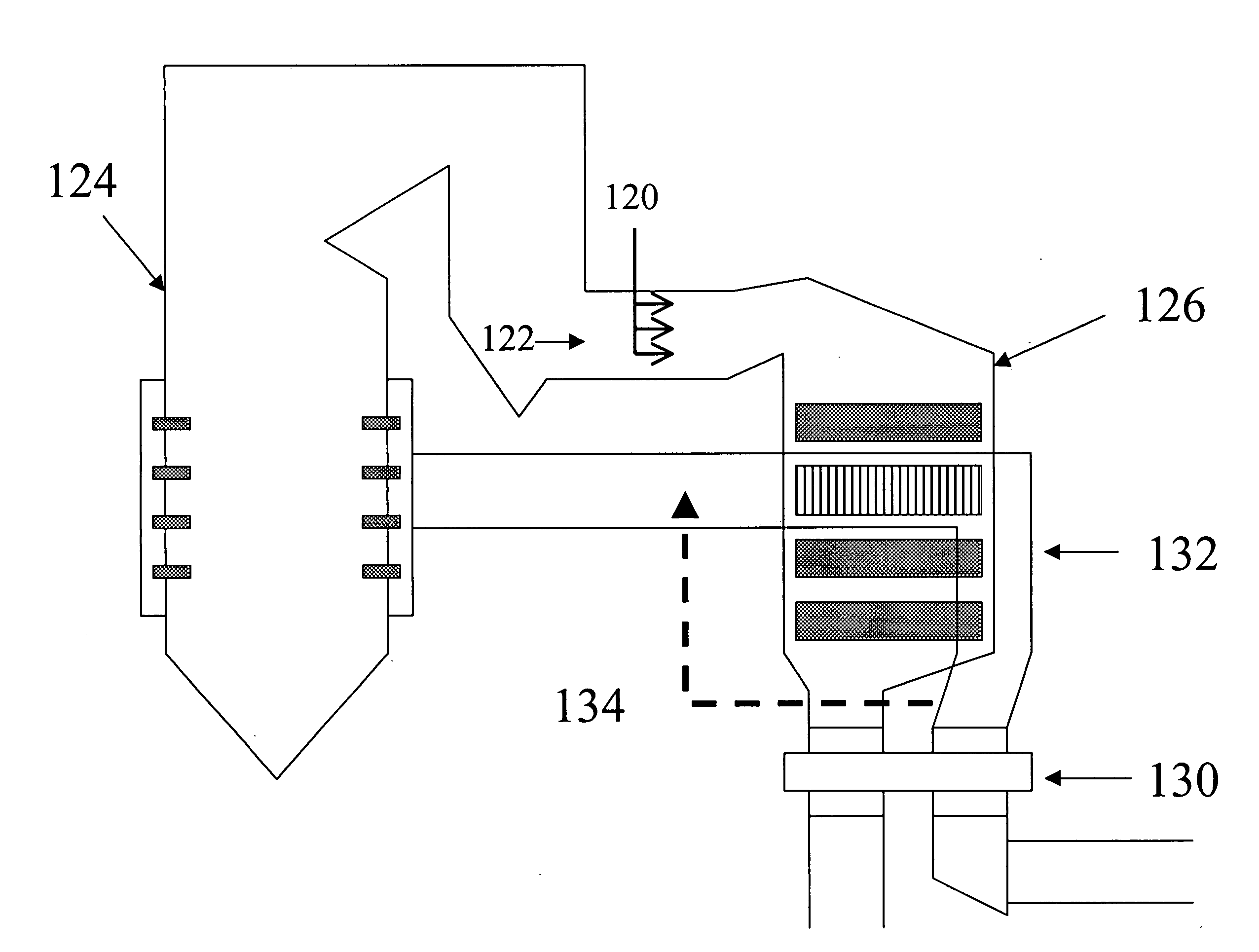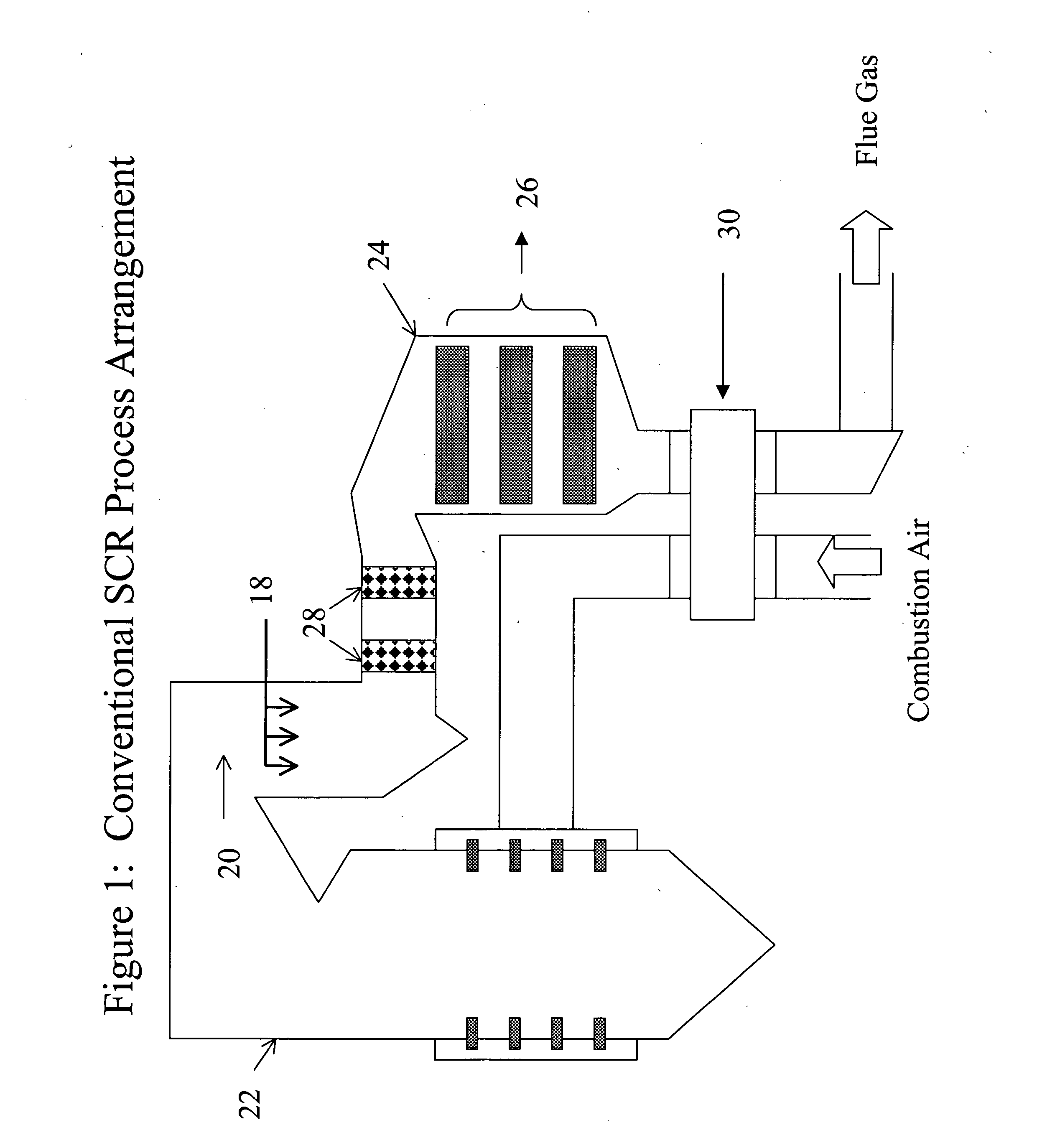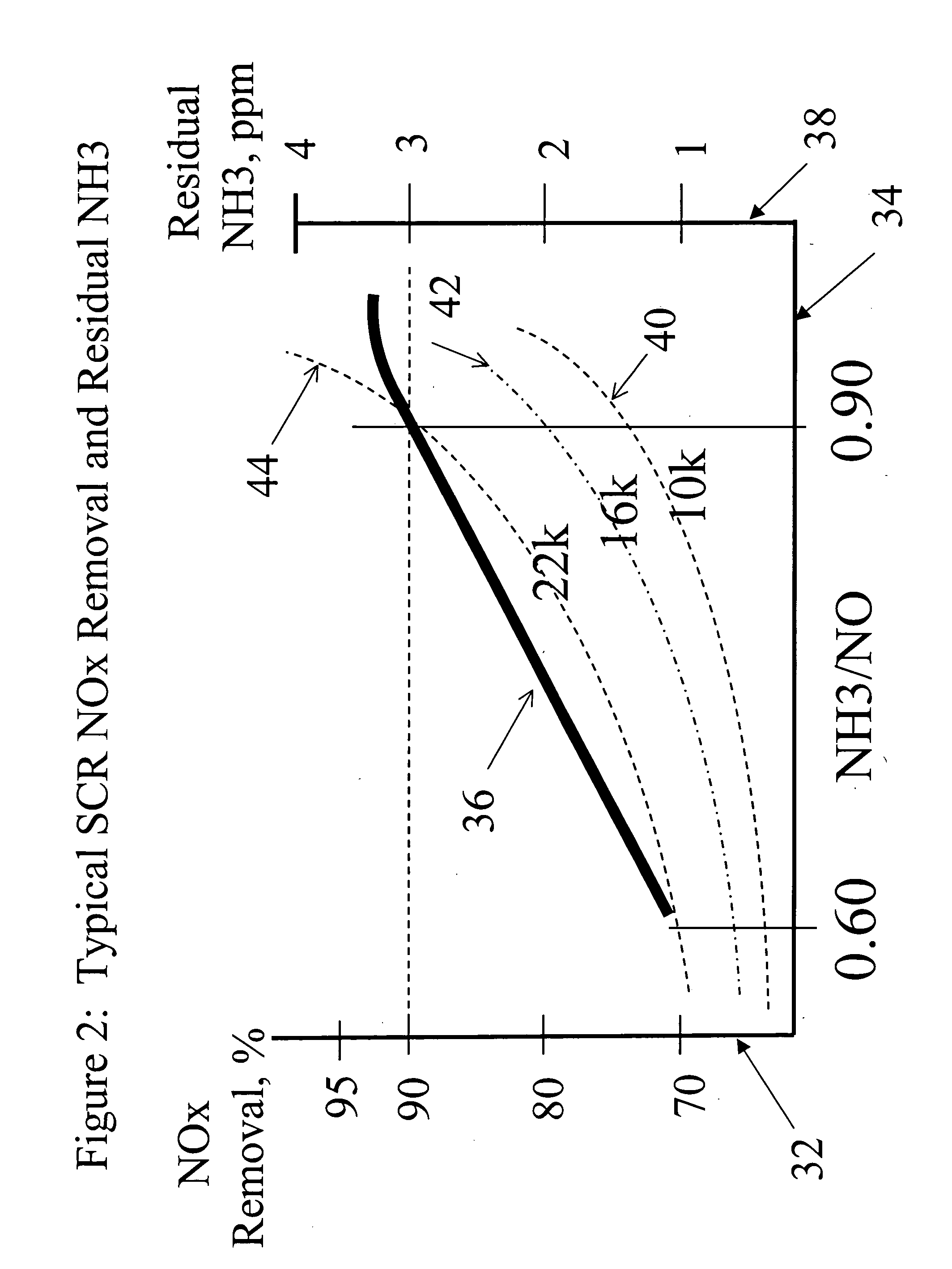Multi-stage heat absorbing reactor and process for SCR of NOx and for oxidation of elemental mercury
a heat absorbing reactor and elemental mercury technology, applied in the field of environmental control, can solve problems such as problems such as application problems, complicating the operation of balance-of-plant equipment, and nox-fired power plants, and achieve the effects of reducing so2 oxidation, avoiding overheating of tubes, and increasing mercury oxidation
- Summary
- Abstract
- Description
- Claims
- Application Information
AI Technical Summary
Benefits of technology
Problems solved by technology
Method used
Image
Examples
Embodiment Construction
[0089] The innovation to this concept that is the subject of this disclosure provides benefits beyond the conventional approach described in these references in three ways. First, the removal of nitrogen oxides (NOx) increases. Second, the production of secondary and byproduct species is reduced, improving the reliability and applicability of the process. Third, the innovation promotes the control of mercury (Hg) emissions from coal-fired powerplants, without an accompanying deleterious impact that compromises broad use of this technology.
[0090] SCR technology could benefit from an improvement, as described in this disclosure, to simultaneously reduce one or both of the undesirable process byproducts, and improve the tolerance of balance-of-plant equipment to these byproducts. The ability to oxidize mercury from the elemental state to the oxidized state without producing undesirable byproducts such as SO3 is a further feature of the inventive process. The conventional application o...
PUM
| Property | Measurement | Unit |
|---|---|---|
| Temperature | aaaaa | aaaaa |
| Fraction | aaaaa | aaaaa |
| Temperature | aaaaa | aaaaa |
Abstract
Description
Claims
Application Information
 Login to View More
Login to View More - R&D
- Intellectual Property
- Life Sciences
- Materials
- Tech Scout
- Unparalleled Data Quality
- Higher Quality Content
- 60% Fewer Hallucinations
Browse by: Latest US Patents, China's latest patents, Technical Efficacy Thesaurus, Application Domain, Technology Topic, Popular Technical Reports.
© 2025 PatSnap. All rights reserved.Legal|Privacy policy|Modern Slavery Act Transparency Statement|Sitemap|About US| Contact US: help@patsnap.com



